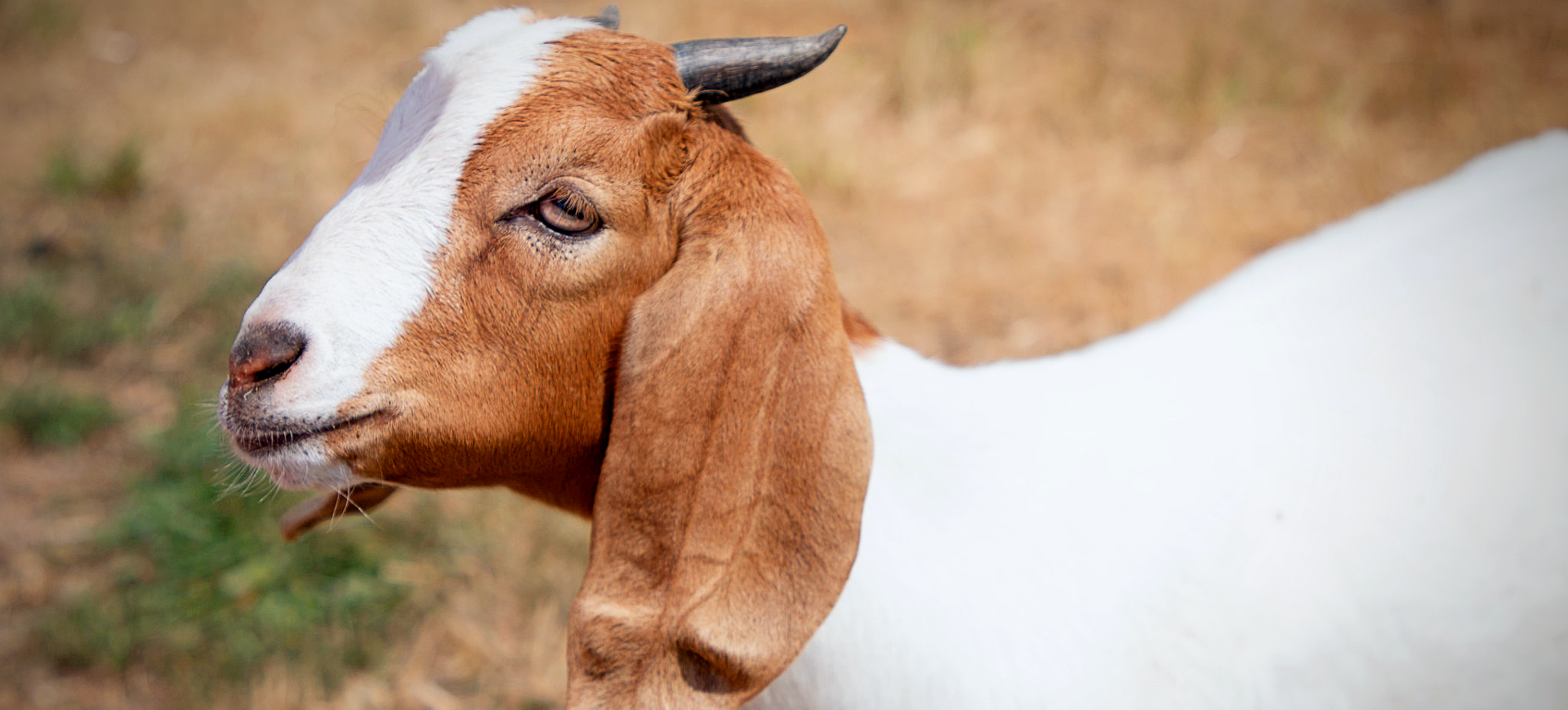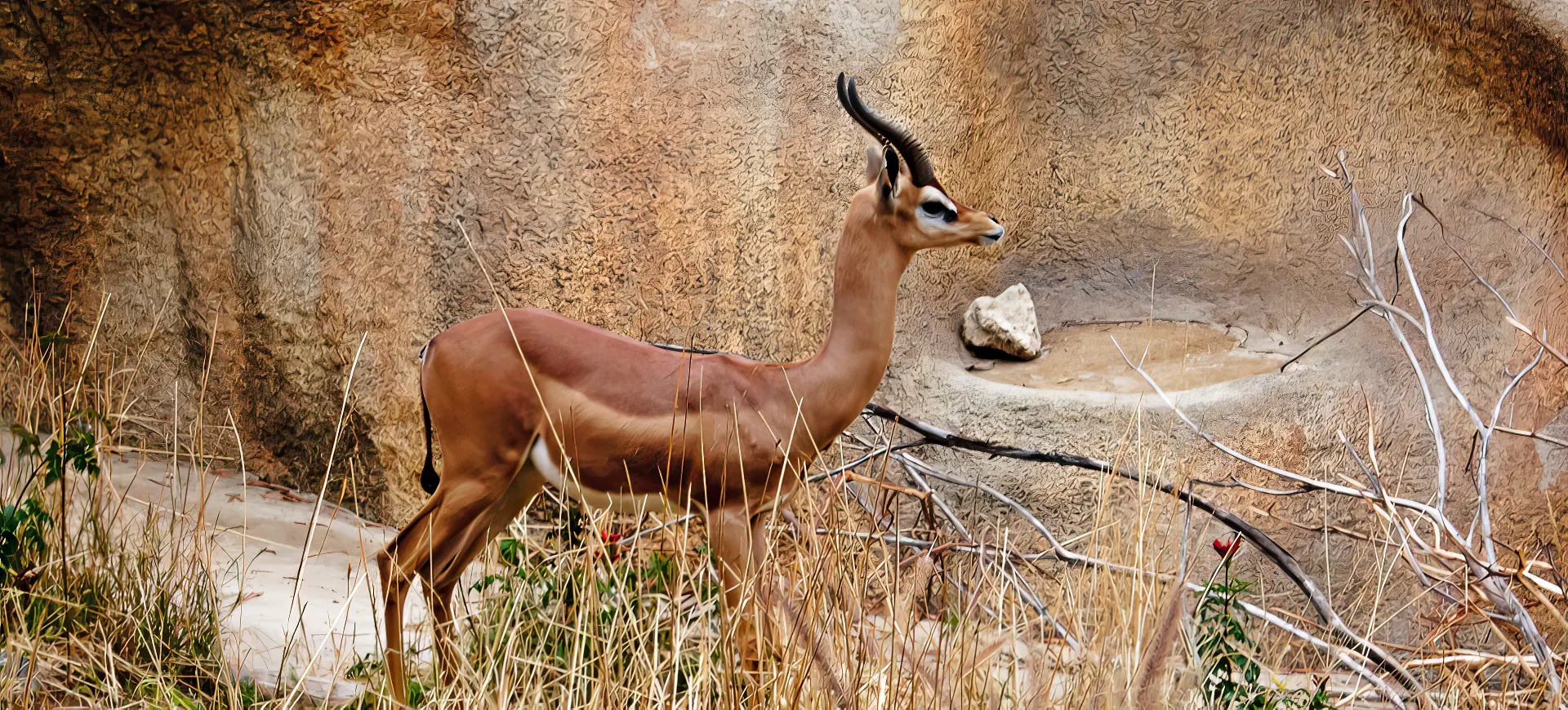Overview
The Impala is a medium-sized antelope native to eastern and southern Africa. Known for its agility and speed, the Impala is a highly adaptable animal that can thrive in various habitats, from savannas to woodlands. It is easily recognizable by its slender, muscular build, reddish-brown coat, and the characteristic black stripes on its tail and hind legs.
Males, also known as rams, have lyre-shaped horns that can grow up to 36 inches. These horns are primarily used in fights for dominance and territory. Females, known as ewes, lack horns but share the same sleek appearance and are generally smaller than males.
Impalas are social animals that usually form two types of herds: one consisting of females and their offspring and the other of bachelor males. They are known for their leaping ability, capable of jumping up to 10 feet in height and 33 feet in length when threatened, making them one of the most agile animals in their habitat.
Taxonomy
Kingdom
Phylum
Class
Order
Family
Genus
Species
Sub Species
Type
Physical Description:
The Impala has a slender and agile build, with a reddish-brown coat that helps it blend into its natural environment. Males are distinguished by their lyre-shaped horns, which can grow up to 36 inches. Both males and females have characteristic black stripes on their tails, hind legs, and underbellies.
Adult male Impalas typically weigh between 117 and 168 lbs, while females weigh between 88 and 117 lbs. Males stand at a shoulder height of about 33 to 39 inches, and females are slightly shorter. The body length of an Impala can range from 47 to 63 inches.

Lifespan: Wild: ~12 years || Captivity: ~17 years

Weight: Male: 117–168 lbs (53–76 kg) || Female: 88–117 lbs (40–53 kg)

Length: Male & Female: 47–63 inches (119–160 cm)

Height: Male: 33–39 inches (84–99 cm) || Female: 30–36 inches (76–91 cm)

Top Speed: 50 mph (80 km/h)
Characteristic:
Native Habitat:
Impalas are native to eastern and southern Africa and inhabit various ecosystems. They are highly adaptable and thrive in savannas, woodlands, and grasslands. They prefer areas that offer a combination of grazing and browsing opportunities and access to freshwater sources.
The species is known for its adaptability, which allows it to coexist with humans in farmlands and other modified environments. However, they are most commonly found in protected areas such as national parks and reserves, where they are less susceptible to hunting and habitat loss.
Biomes:
Biogeographical Realms:
Continents:
Diet:
Diet & Feeding Habits:
Impalas are mixed feeders, meaning they consume grass and browse depending on the season. During the wet season, they primarily graze on fresh grasses. In the dry season, they switch to browsing, feeding on shrubs, bushes, and other available foliage.
Impalas have a complex, four-chambered stomach that allows them to effectively digest a variety of plant materials. They are also known to consume fruits and acacia pods and require regular water access. However, they can go without it for short periods if feeding on succulent vegetation.
Mating Behavior:
Mating Description:
Impalas have a polygynous mating system, where dominant males establish territories and gather harems of females. The mating season, also known as the rut, occurs during the wet season when food is abundant. During this time, males engage in intense fights using their horns to establish dominance and win the right to mate with females.
After a successful mating, the gestation period lasts about 194 to 200 days. Females usually give birth to a single fawn, although twins are not uncommon. The fawns are born in secluded areas and are kept hidden for a few weeks before joining the mother’s herd. They are weaned at four to seven months.
Reproduction Season:
Birth Type:
Pregnancy Duration:
Female Name:
Male Name:
Baby Name:
Social Structure Description:
Impalas are social animals that form two main types of groups: bachelor herds and breeding herds. Bachelor herds consist of males that have not yet acquired a territory or a harem of females. A dominant male leads breeding herds and consists of females and their offspring. The social structure is relatively fluid, with individuals frequently moving between herds.
During the rutting season, the social dynamics change significantly. Dominant males establish territories and gather harems of females, which they defend aggressively against rival males. After the rut, the social structure returns to its more fluid state, with males often forming bachelor groups until the next mating season.
Groups:
Conservation Status:
Population Trend:
Impalas are not currently considered endangered and are listed as “Least Concern” on the IUCN Red List. They have a stable population and are estimated to number around 2 million in the wild. They are commonly found in protected areas such as national parks and reserves, which offer them some protection from hunting and habitat loss.
Despite their stable status, Impalas face threats from habitat loss due to agriculture and human settlement. They are also hunted for their meat and horns, which are more controlled within protected areas. The species is also susceptible to diseases like foot-and-mouth and rinderpest, which can have localized impacts on populations.
Population Threats:
The primary threats to Impala populations include habitat loss due to agriculture and human settlement. They are also hunted for their meat and horns, which can lead to population declines if not properly managed. In some areas, they are considered pests by farmers and are killed to protect crops and grazing land for livestock.
Impalas are also susceptible to diseases like foot-and-mouth and rinderpest. These diseases can significantly impact local populations, especially if they coincide with other stressors like drought or increased predation. Disease outbreaks are generally more controlled within protected areas, where veterinary interventions are possible.
Conservation Efforts:
Conservation efforts for the Impala primarily focus on habitat preservation and sustainable hunting practices. Many countries have implemented hunting quotas and seasons to ensure stable populations remain. Protected areas like national parks and reserves also offer safe habitats where the species can thrive.
In addition to these measures, some areas have community-based conservation programs that involve local people in protecting and managing Impala populations. These programs often include educational components to raise awareness about the ecological importance of the species and the need for sustainable management practices.
Additional Resources:
Fun Facts
- Impalas can leap up to 10 feet in height and 33 feet in length.
- They have a “follow-me” stripe on their hind legs to help fawns follow their mothers.
- Impalas have scent glands on their hind legs that they use for communication.
- They are one of the few antelope species that both graze and browse.
- Impalas can rotate their ears to listen to predators while grazing.
- They have a complex, four-chambered stomach for efficient digestion.
- Impalas are known for high-pitched alarm calls that alert other animals to danger.
- They can run at speeds of up to 50 mph to escape predators.
- Impalas have a polygynous mating system, with dominant males gathering harems of females.
- They are not currently considered endangered and have a stable population in many parts of their range.

















































































